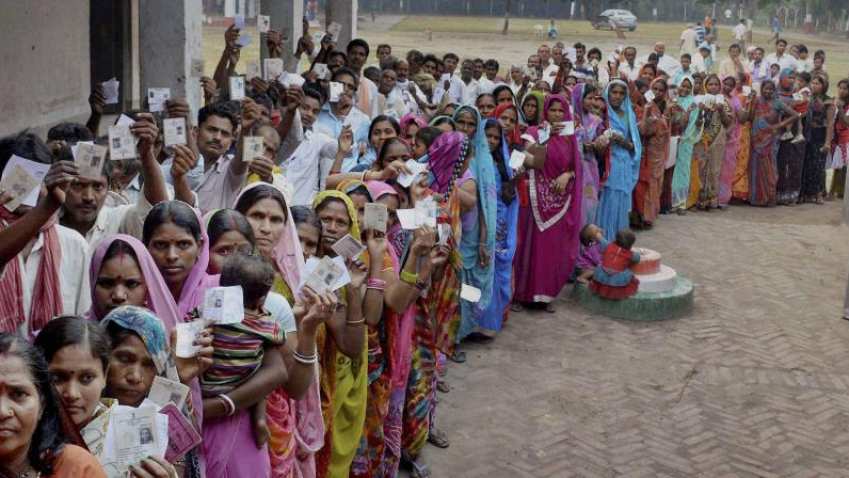
Bengal: Can cash-strapped Left Front prevent its whitewash by rationing resources?

In not-so-distant past, red flags of Communists parties were a dominant part of West Bengal’s landscape. From the lofty heights of Darjeeling to marshy islands of Sundarbans they had a ubiquitous presence, and not necessarily only during election season.
Cut to 2019– eight years after the collapse of the state’s communist regime—the once omnipotent and omnipresence red has been reduced to patches. If pushed further, the Communist Party of India- Marxist (CPI-M)-led Left Front would be completely wiped off the state’s map.
“This is perhaps for the first time in the electoral history of West Bengal that not a single CPI (M) flag can be seen in my neighborhood,” said Ranjan Sengupta, a resident of Kankurgachi, which falls under North Kolkata Lok Sabha constituency.
In many booths of the constituency, the party candidate Kaninika Bose Ghosh apparently will not be able to even depute a polling agent. Her party agents could not even go for door-to-door delivery of voter slips in most localities of the constituency.
In the South Kolkata constituency too the scenario is not much better for the CPI (M) candidate Nandini Mukherjee.
This is, however, only a part of the story. The CPI (M) general secretary Sitaram Yechury’s road show from Baranagar to Sodepur, in support of the party’s Dum Dum candidate Nepaldev Bhattacharjee on Thursday (May 16), could well be perceived as a scene from a different era, when Bengal was still ruled from the Writers’ Building by a Communist chief minister.
Thousands of party supporters displaying red flags marched on the street trailing the open-hood Jeep Yechury and Bhattacharjee mounted. The CPI (M) is all over the place in the constituency.
Of the nine constituencies going to poll on Sunday (May 19), the Left is not just alive, but is kicking too in Dum Dum, Jadavpur and Diamond Harbour.
The CPI (M)’s state general secretary Surjya Kanta Mishra claimed that if the elections were free and fair in these three constituencies, many political pundits would be proved wrong by his party.
Even in earlier six phases, the Left had similar contrasting presence. In some constituencies such as Raiganj, Barrackpore, Bankura and Murshidabad it was a dominant force, while in most others it had almost no presence, compelling even the party’s hardcore supporters to go the BJP’s way.
What explains the contrast?
The dichotomy is the fallout of a political strategy the resource-crunched Left parties adopted this time, leaders of the CPI (M)’s several district units say in private. According to them the last general elections were a learning experience.
In 2014 parliamentary elections, the Left Front (CPI-M, CPI, Forward Block and others), secured 29.71% votes in the state, but got only two seats. The Congress, on the other hand, got four seats by pulling only 9.58% votes.
This time the Left parties decided not to waste energy and resources in too many seats as they did last time. Apart from political exigency, the decision was also goaded by lack of fund.
After being out of power in the state for eight years, coffers of the Communist parties have gone dry. A CPI (M) leader said the party’s central committee could not help much, so were the Tripura and Kerala units. After the defeat of the Left Front government in Tripura last year, the Communists are now in power only in Kerala. This has severely limited Left parties’ fund mobilizing avenues.
CPI (M)’s sitting MP Mohammad Salim had to take to online crowd funding to finance a part of his campaign.
Keen on alliance with the Congress
A leader of one of the LF constituents said this time the front was not keen on contesting more than 15-20 seats. It has ultimately put up candidates in 38 of the state’s 42 LS seats as a seat sharing formula could not be worked out with the Congress.
He said it was not the number of seats, but the Congress’s insistence on getting a few seats, where the front felt it had a better winning chance, came on the way of forging an alliance.
Had the grand-old party agreed to vacate Raiganj and Murshidabad seats in favour of the CPI (M), the only two seats it had won last time, the tie-up would have been possible, he said.
Will the strategy work?
Political observers agree that to prevent a whitewash, the Left had no other choice but to pull all their resources in a few select seats where they have a real chance of winning.
In the long-run, they felt, the strategy would be counterproductive.
“Left parties are in a catch-22 situation. If they had equally spread their limited resources, they might have overall got more votes across the state, but in all likelihood they would have drawn a blank in the seat tally. So, in a way it is a wise decision,” said senior political commentator Nirmalya Banerjee.
This eventually, however, would further weaken the Left vote base in the state and would shrink its influence to only limited pockets, he warned, citing the example of another former ruling party of the state, the Congress.


